5 Key Capabilities to Drive Revenue with Data Sharing
Data Sharing and Data Democratization: An Enterprise Need

“Data is the new raw material of business.” "Data is the oxygen of the digital economy."
You may have heard statements like these. They emphasize just how critical data is in today’s world. We are living in a time where we are surrounded by data. From smartphones to wearables to sensors, we’re generating data at an ever-increasing pace. The world is predicted to produce slightly over 180 zettabytes of data by 2025.1 When used effectively, this data can help tell a larger story and provide depth and context.
Teams across the organization want to use data to work more efficiently, and the C-suite is no exception. Chief financial officers (CFOs) want data for forecasting. Chief marketing officers (CMOs) want to run engaging campaigns that reach the right audiences. Chief revenue officers (CROs) want to identify cross-selling opportunities. Chief information officers (CIOs) need to be able to show compliance with the data in use. And chief operations officers (COOs) want to ensure that their profit reports are accurate and timely.
They are looking to chief data officers (CDOs) and chief data and analytics officers (CDAOs) to create a streamlined method for accessing the data they need. And while an organization’s data consumers may include technically savvy users — such as data scientists, data engineers and developers — there are now a growing number of citizen integrators, analysts and consumers who want access to the data that can help them make their initiatives a success.
But how can data consumers across the organization get access to data without having to rely on IT? Is there a way to avoid asking IT personnel to spend hours finding and building data pipelines to provision the right data? In a word, yes. When you share and democratize data with everyone across the organization, data owners can publish their valuable data assets. Data consumers can then easily shop and request the data they need. It all happens through a one-stop shop for everything data.
Challenges That Necessitate Data Sharing and Data Democratization
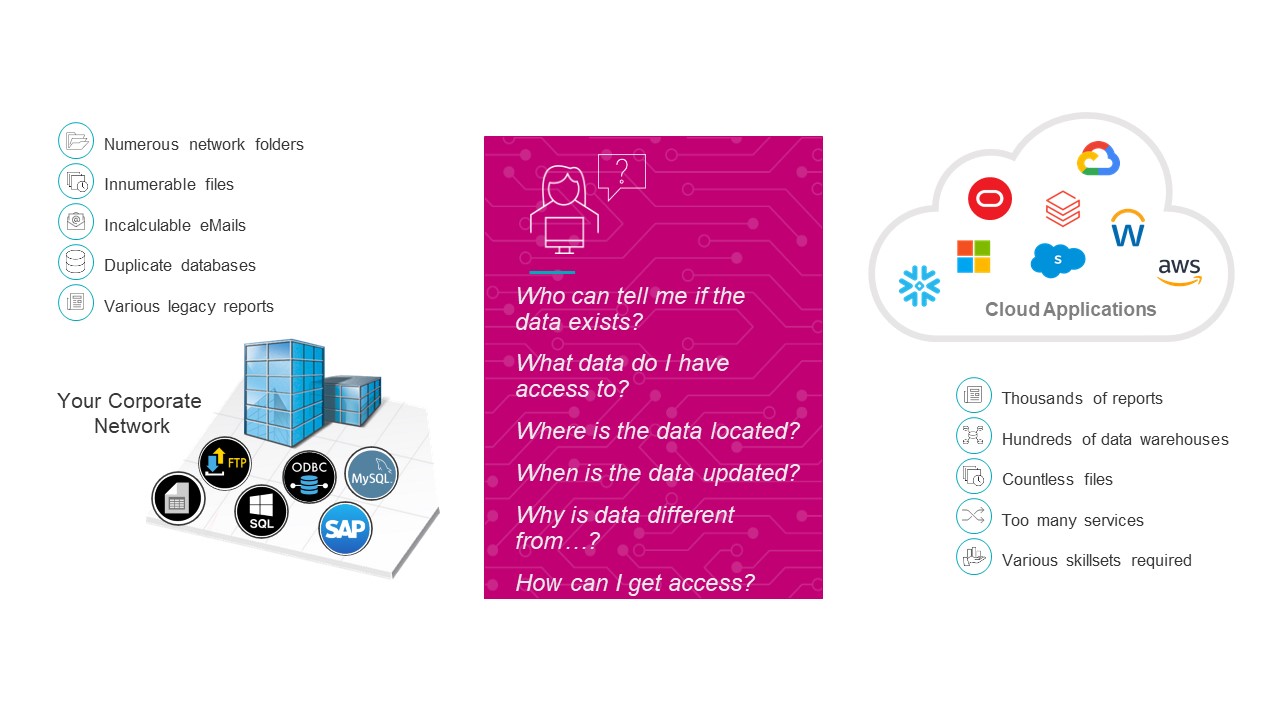
In organizations today, there is no dearth of data, and there is no lack of enthusiasm on the part of data consumers to use data. If anything, businesses are trying to be more data-centric and data-driven. And that translates into huge demand from business users throughout the enterprise. These days, everyone wants to get access to data that will help them do their job better.
Access is key. When you’re storing data across different systems (or on multi-cloud or hybrid environments), it can be challenging for non-technical users to find and provision the data they need. By providing intelligent solutions, you help non-technical users overcome the lack of technical expertise and accelerate their time to value and operational efficiencies. Without data intelligence, IT must spend more time and effort to triage a deluge of data pipeline requests. Two other concerns: IT needs to be confident that the data they are provisioning is fit for purpose and business users want to feel confident that the data they are using is actionable.
What Is the Solution?
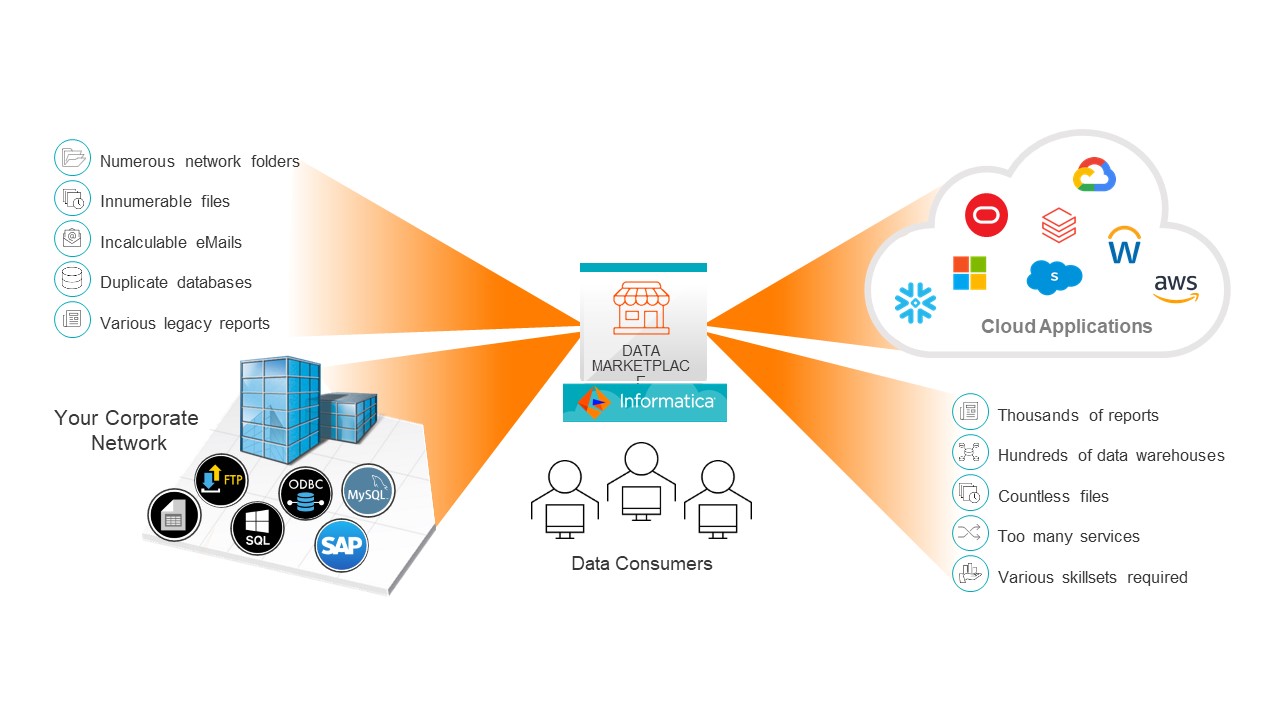
The challenges to data sharing and data democratization may seem considerable, but there is an elegant solution. After all, these days nearly everyone uses digital marketplaces to shop for or sell items online. What if we could do the same in the world of data, too? What if data producers could publish their data assets, give context to them and provide options for provisioning? In that scenario, data consumers could shop for and request data they need, using a familiar online-shopping–like user experience. Even better, wouldn’t it be nice if there was a way for data consumers to be confident about the data they request?
All of these questions have an intelligent answer: a robust data marketplace. A data marketplace provides you with the ability to make data sharing and data democratization across the organization simple and easy. It can bring data producers and data consumers together in one place that can serve as the true storefront for an organization’s data.
5 Key Capabilities of a Data Marketplace
A data marketplace can be the ultimate data shop for any organization that wants to set close collaboration into motion and make data sharing look easy. But for that to happen, your marketplace should have some fundamental capabilities.
- Publish and package data: Data producers across the organization should be able to publish their data assets, package them into logical collections, add terms of use for the data and provide delivery options for each data collection.
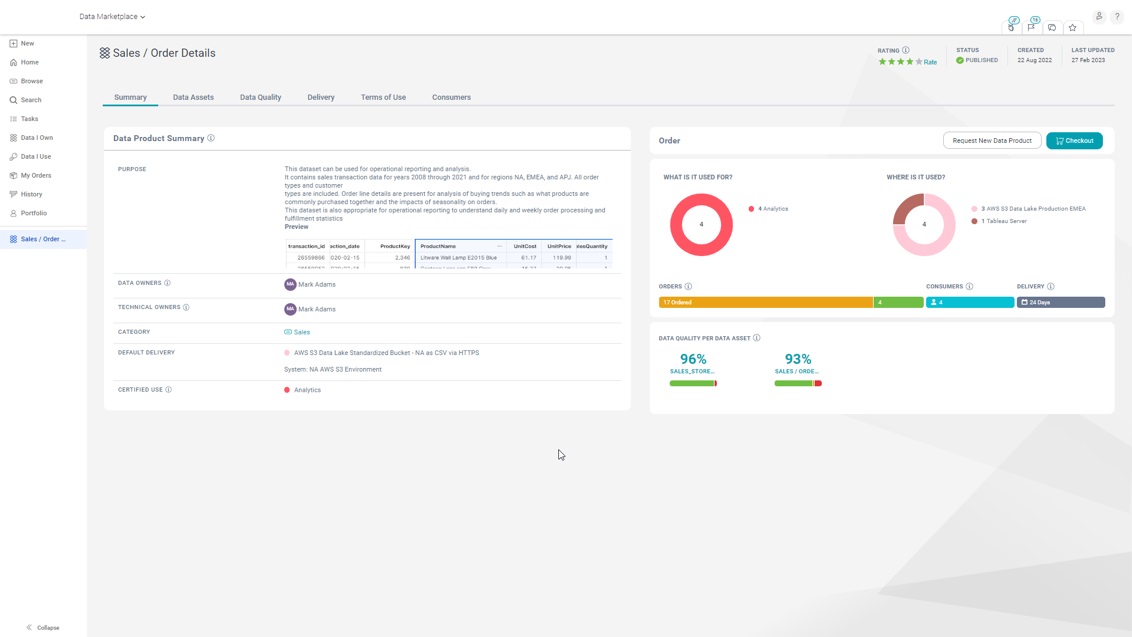
- Browse and find data: Data consumers should be able to easily find data assets. A data marketplace should provide a Google-like semantic search capability so data consumers can find what they are looking for. They should be able to search based on the type of data asset, preferred delivery method, data category and more. Finding data assets should be simple and similar to a typical online shopping experience.
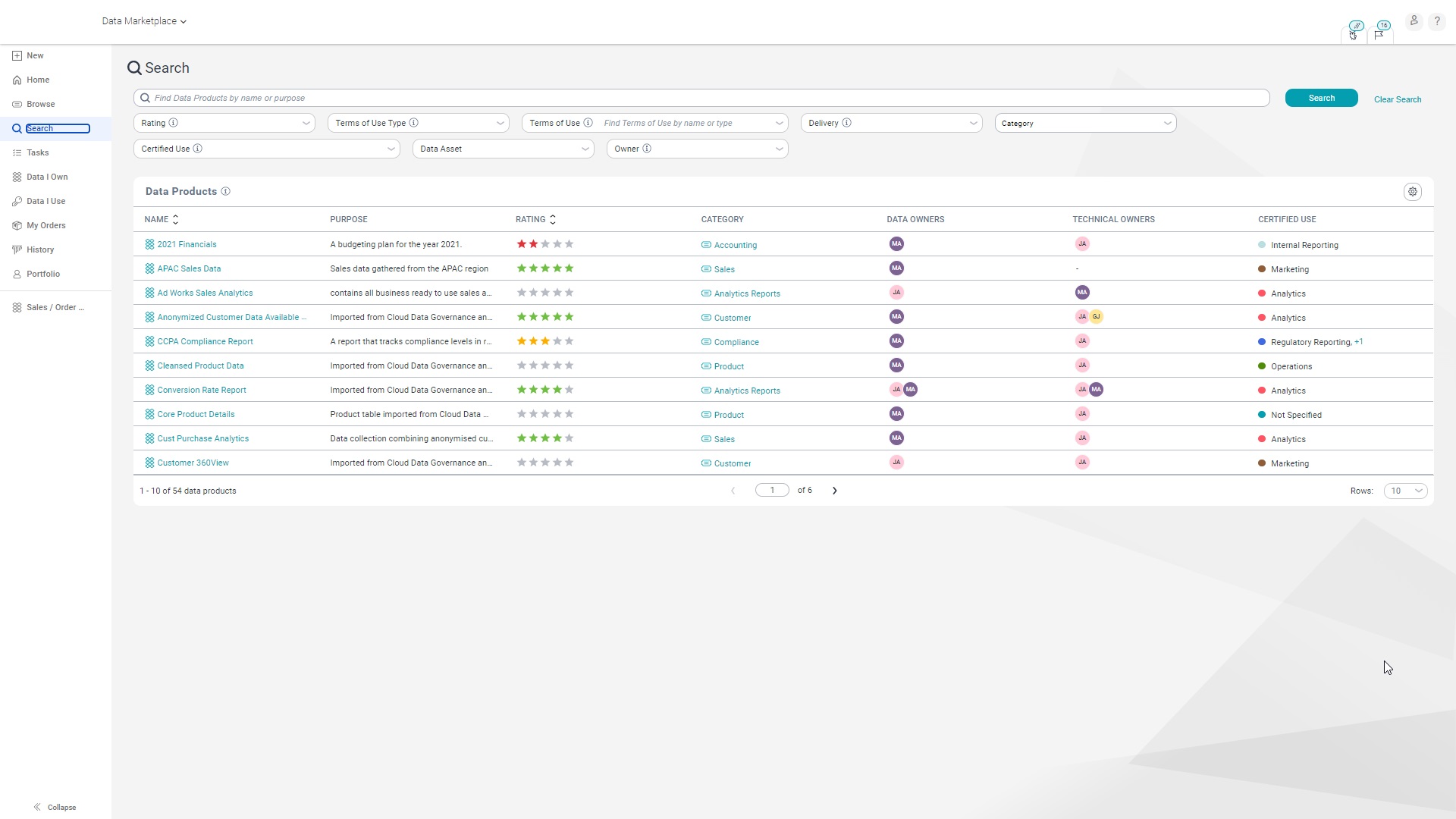
- Get context about data: When data consumers find data collections that look promising, they should be able to get more information about that data. This additional context — which can include data quality scores, user ratings and user comments — can help them decide whether they want to use the data.
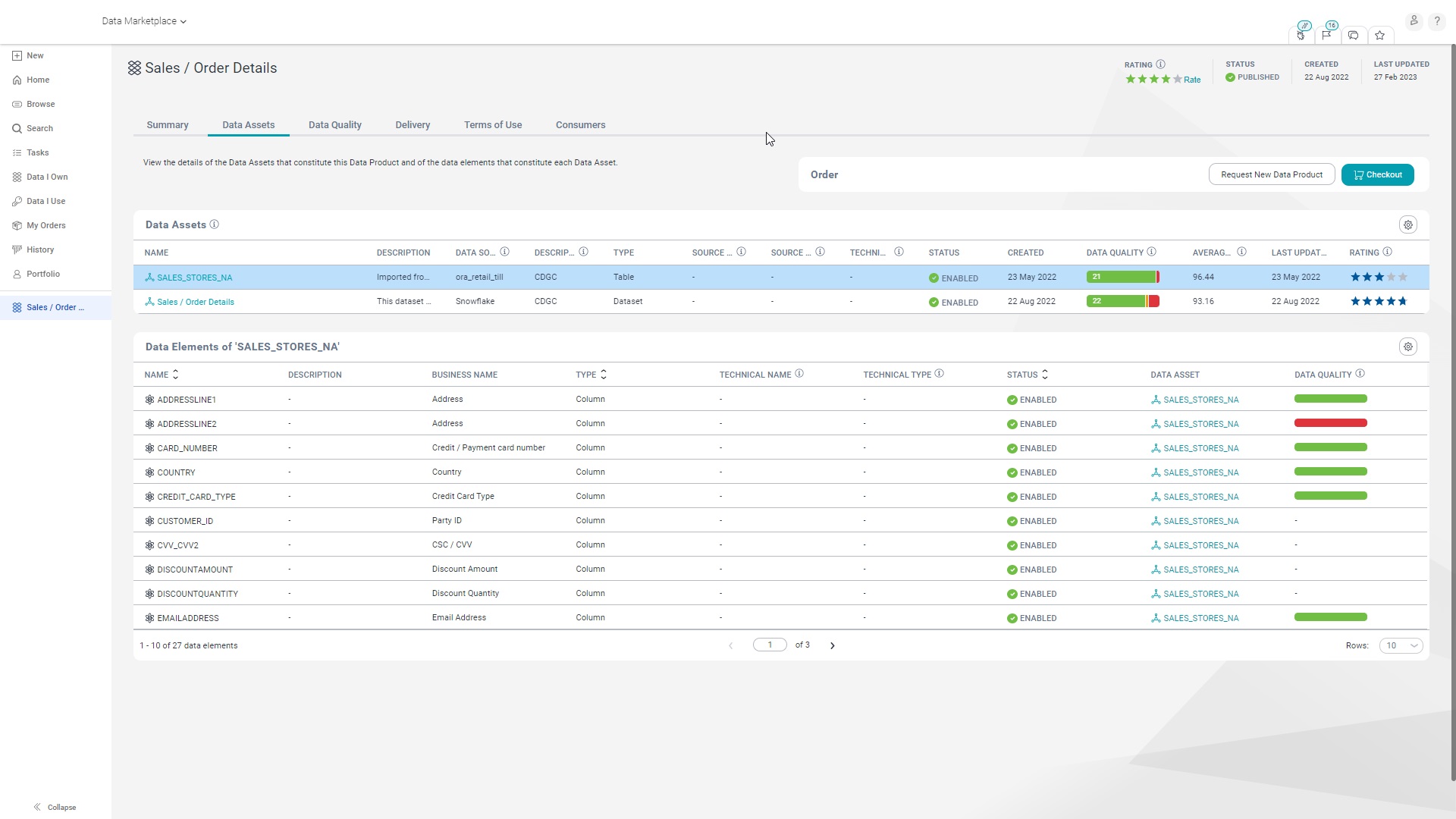
- Shop and request data: Data consumers want a simple and intuitive way to place an order for data and to be able to track the status of their request from order to fulfillment. They should also have the option to request enhancements if they have additional data requirements that the existing data asset does not meet.
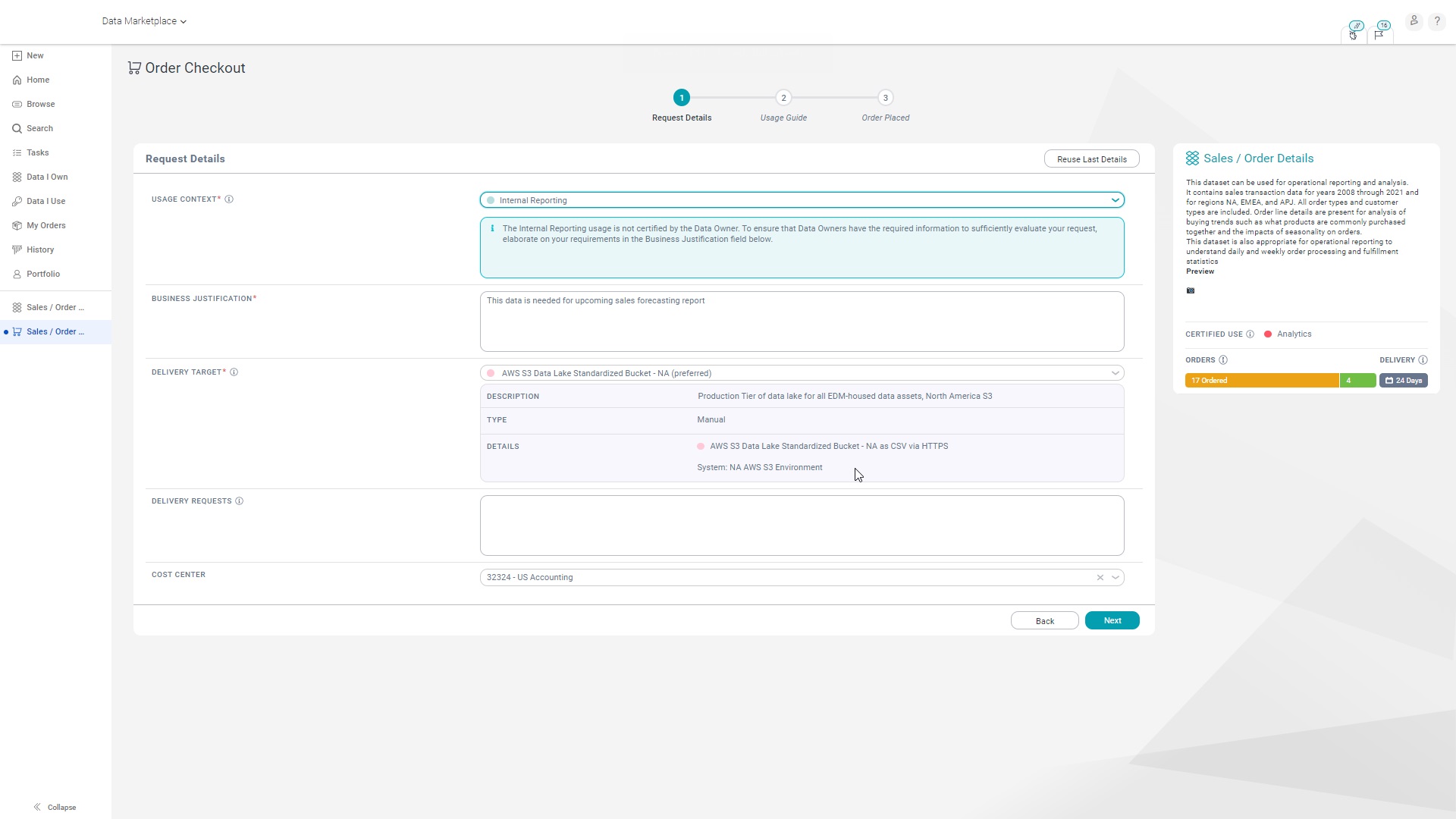
- Fulfill request for data: Data owners should be notified about pending data access requests. They should also be able to provision the data and make it available for the data consumer using the elected delivery option. They should also be able to collaborate with their peers to accelerate the fulfillment process as necessary.
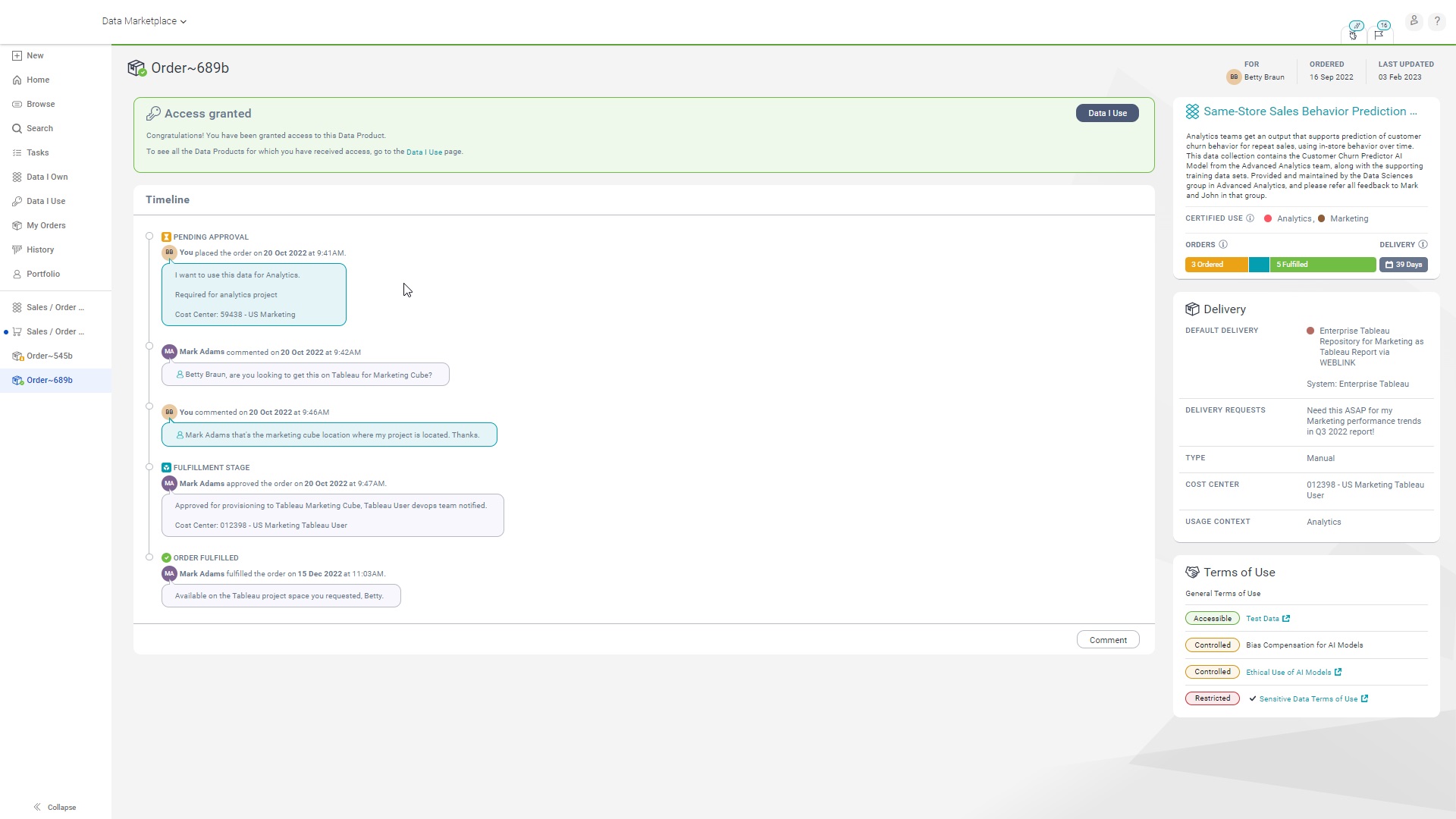
How It All Comes Together — A Look Behind the Scenes for Two Different Marketplaces
We’ve already mentioned how a data marketplace can serve as the perfect place for sharing and democratizing data. What kind of marketplace do you want to offer, and how can you get your marketplace up and running? There are essentially two strategies for that:
- One way to set up a data marketplace is to start using it before you have other data management capabilities up and running. With this approach, you need to tap into human knowledge to crowdsource a lot of information.
- The other way invests in comprehensive data management capabilities for data sharing and democratization. This way delivers a better overall experience for data consumers. How do they do that? Well, imagine a store that you like to visit. You see all the products categorized, labeled and organized in way that makes your shopping experience simple and enjoyable. To deliver this kind of store experience, there’s a lot that has to happen behind the scenes.
The same is true when you’re automating data sharing. You need the data marketplace to offer a complete data shopping experience. Meaning that when consumers want access to specific data, it needs to be provisioned through different data integration patterns (kind of like shipping and logistics).
You want to be confident that the assets that you’re promoting in a data marketplace are of usable quality — which requires that data quality is in place when the data is being collected and moved (and that looks a lot like quality control). Once the data is stored in a final location, you need to be able to govern the asset through oversight and classification (which is very similar to inventory management).
And finally, some citizen analysts may need to create data recipes for their projects, and they may want to socialize them with others by using a data preparation capability (picture a chef in a kitchen preparing fresh food). So, a data marketplace can be successful because it offers capabilities such as:
- Data integration
- Data quality
- Data governance and catalog
- Data preparation
Bring Your Data Sharing to Life Through the Informatica Intelligent Data Management Cloud
So, we’ve covered how data sharing and democratization can reduce a lot of bottlenecks and overcome data silos throughout the business. We’ve showed how the right data marketplace can provide access for data consumers across an organization. And how this access can help the whole organization unlock true value of using the right data at the right time. By making the process easy and reducing dependence on IT, data-driven organizations can stay ahead of competition by realizing quick business outcomes and driving revenue.
And that’s possible because Cloud Data Marketplace is a service of the Informatica Intelligent Data Management Cloud™ (IDMC), the industry’s first and most comprehensive AI-powered data management cloud. IDMC offers the key data management capabilities data-driven organizations need to be successful.
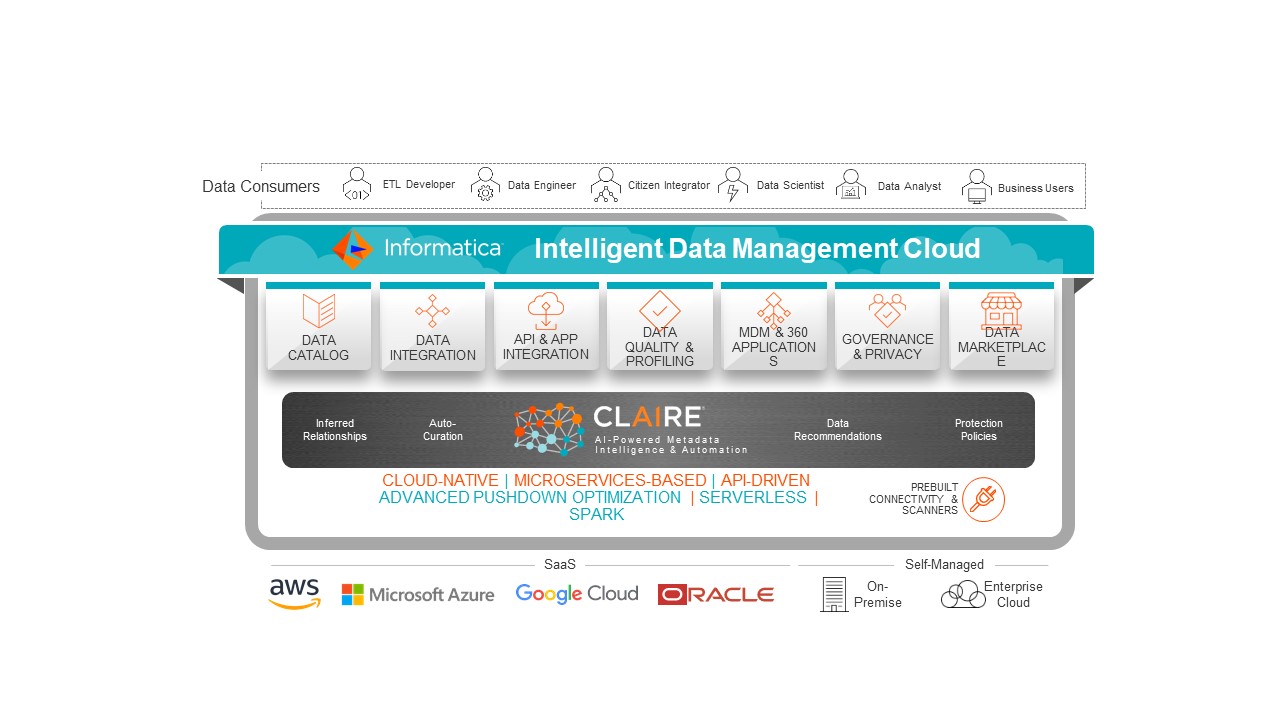
IDMC makes it easy for your organization to bring data sharing and democratization to life.
Learn More
There are several places you can start:
- To learn more about data sharing and democratization, join us on March 15 for our webinar: Drive Revenue with Data Sharing: Overcome Data Silos with Data Democratization.
- Visit our Experience Lounge to try interactive demos that show Data Marketplace in action.
- Join us at Informatica World 2023 in Las Vegas May 8–11. Register now.
1Volume of data/information created, captured, copied and consumed worldwide from 2010 to 2020, with forecasts from 2021 to 2025 (in zettabytes), Statista, https://www.statista.com/statistics/871513/worldwide-data-created/








